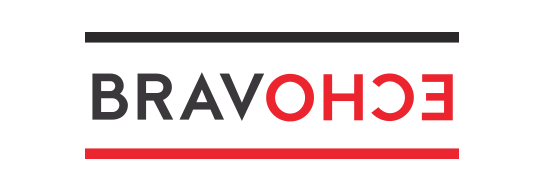
31 Jul That Cannes-Do Spirit.
By BravoEcho
BravoEcho went to the Cannes Lions Festival this year. Well, online anyway. We wore out our digital pass taking it all in. Here are our highlights – ideas that will raise your level of communications thinking, creativity, and performance.
1. Working with Creators is now a must.
Creator economy experts Colin Rosenblum and Samir Chaudry surprised us with these facts – more people watch YouTube on their living room TV than watch any streaming app; and what they’re watching is becoming like episodic TV – long-form storytelling, a repeatable format, 20-22 minute episodes.
They said marketers should think about Creators not as talent paid to hawk a product, but as showrunners who integrate brands in a way that elevates their audience’s experience. Goals should be built around awareness and sentiment, not sales. And content should be viewed in two ways – short-form as a unit of conversation shared for social currency; and long-form as utilitarian, consumed for entertainment or learning.
Separately, Kantar presented five ways to effectively leverage Creators for brand growth:
- Long-term platforms over isolated campaigns. Almost half of brand impact comes from consistency across executions and media.
- Co-create. ROI increases when brands invite Creators into a holistic strategy rather than pursue transactional deals.
- Trust the Creator to know their platform. Native Creator content builds awareness and brand consideration best.
- Strong Creator-Brand connections build brand equity. The Creator should naturally fit the brand; the idea and its expression should feel true to the Creator; and the story should be tied to the brand’s point of difference.
- Connect through culture as well as Creator. Brands with high cultural vibrancy grow 6x more than brands with low cultural vibrancy.
2. Earned, Shared, & Owned beat Paid in driving purchases.
In a challenge to the lure of lower funnel performance-based marketing, research from WPP Media and Oxford University’s Saïd Business School shed new light on how people decide. The conclusions from their deep dive into 1.1M purchase journeys?
- Incoming brand preference decides 84% of purchases. Middle/lower funnel touchpoints only influence 16%.
- When considering a purchase, people are most receptive to Earned, Shared and Owned touchpoints – they are 3x more influential than Paid.
It’s also vital to understand touchpoint receptivity by category. Personal care has low receptivity – people have a repertoire of brands/products they like and stick with. By contrast, the auto industry has high receptivity – a high-risk purchase with low frequency means people are very open to new information.
3. The power of relationships, relatability & brand building in B2B marketing.
B2B gets little love at Cannes, so we were excited to see this research presented by LinkedIn and Dr. Marcus Collins. Their thinking grew out of three insights:
- The Fear Of Messing Up (FOMU) drives decisions more than innovation and low cost.
- To mitigate risk, a single buyer is now a growing group of people.
- Most buyers are Millennials or GenZ who bring into B2B their personal life habit of relying heavily on those they know and trust to make purchase decisions.
These insights led the researchers to three recommendations:
- Lean into professional relationships. One of the two top decision drivers was “multiple recommendations from my customers and colleagues”. Therefore, optimize marketing for relational reach – the right people, and the right groups of people, who are connected to, trust, and influence each other.
- Make recommendations relatable. “Companies like us recommended them” was by far the most powerful decision defense as buyers sought the protection of category consensus. Therefore, surround buyers all through the funnel with recommendations from those they trust (colleagues, peers, those in the same industry, and industry influencers).
- Build your brand. A brand was 8x more likely to be bought if the entire buyer group knew them from the start. Awareness means trust means safety. Therefore, invest in your brand and be a known, credible and differentiated force in the category.
4. Great ads require emotion, distinctive brand assets, and time.
Maybe this is common sense, but watch one pod’s worth of TV ads and you’ll see that if it is, then it isn’t being followed. System1 combined their adtesting database with Effie’s awards database to understand what makes a great (read more profitable) ad.
- A strong emotional response in a broad audience. The last 15yrs have seen a decline in people’s emotional response to ads. That’s a shame, because ads that do this well are significantly more likely to drive brand consideration and preference, and boost sales, market share, and profit.
- Distinctive brands assets used throughout. Not just in the first five seconds or the logo at the end, but all the way through, integrated naturally, creatively, and incessantly (seven times to maximize brand recall). And the best performing brand assets? Sonic device, brand character, jingle, and distinct product shape.
- Time. In a challenge to the theory of wear-out, their data shows that a great ad does better the longer it airs – 6mths it’s 4x more profitable; but over 3yrs, it’s 7.5x more profitable.
5. Beating and Joining AI.
Finally, everyone at Cannes had an opinion on AI. Three people’s thoughts stood out to us.
- Sir John Hegarty (the H in BBH) suggested we think about AI as a collaborator, not a tool. We don’t just ask for and then take its ideas, we work with it, prompting it (and having it prompt us) in ways that push, challenge and inspire our thinking.
- Nick Law (Creative Chairperson at Accenture Song) saw AI’s role in the How (production) but saw humans as absolutely vital to the Why (strategy, ambition and intention) and the What (creative decision-making, e.g., what’s funny or what’s beautiful). Ultimately, we should guide AI with our human ambition and taste.
- Esi Eggleston Bracey (Unilever’s Chief Growth and Marketing Officer) addressed Agentic AI and a future where we outsource our choices and won’t think about brands at all unless they matter to us. “If marketing today is about capturing hearts and minds, marketing tomorrow is about capturing hearts and machines” she said.



